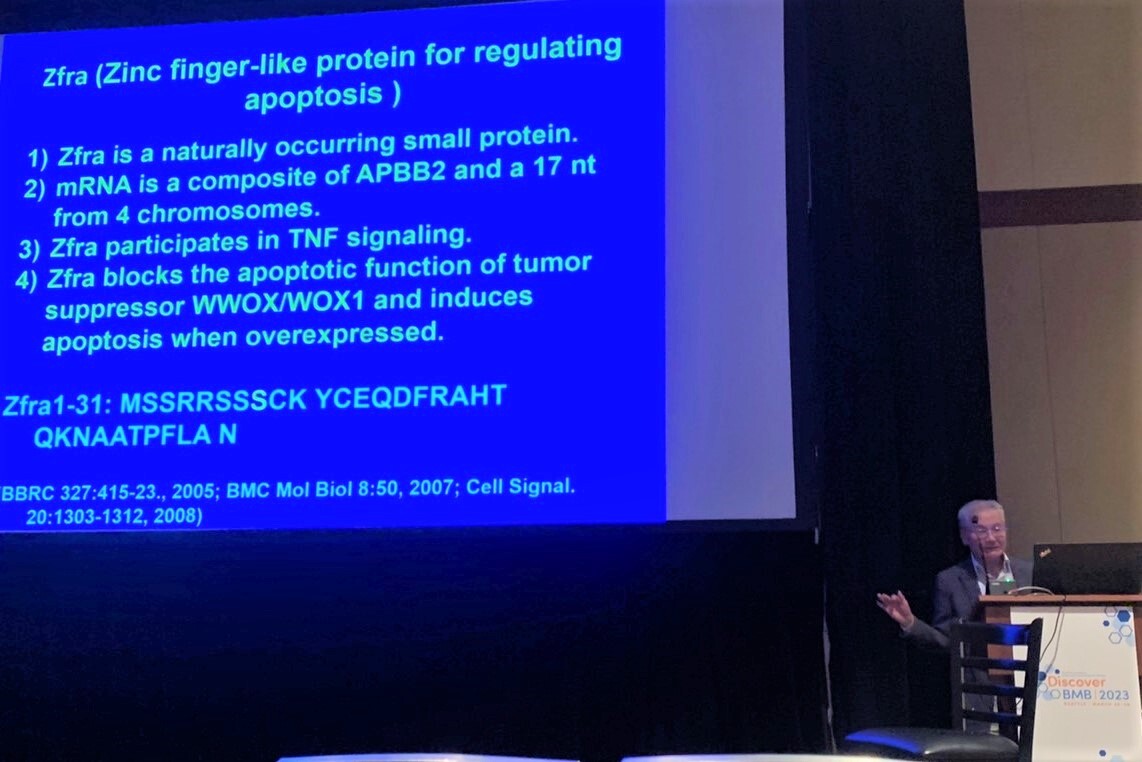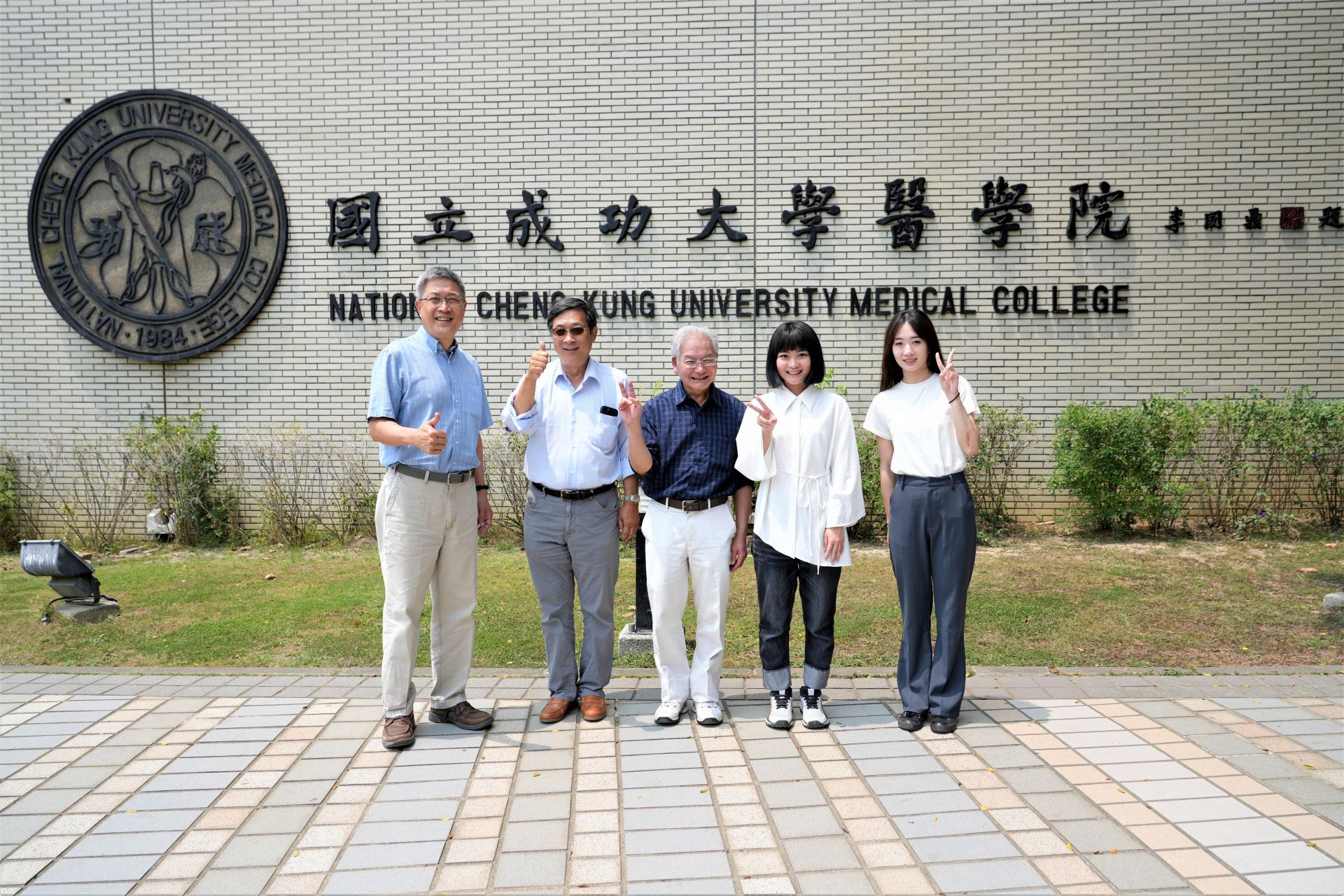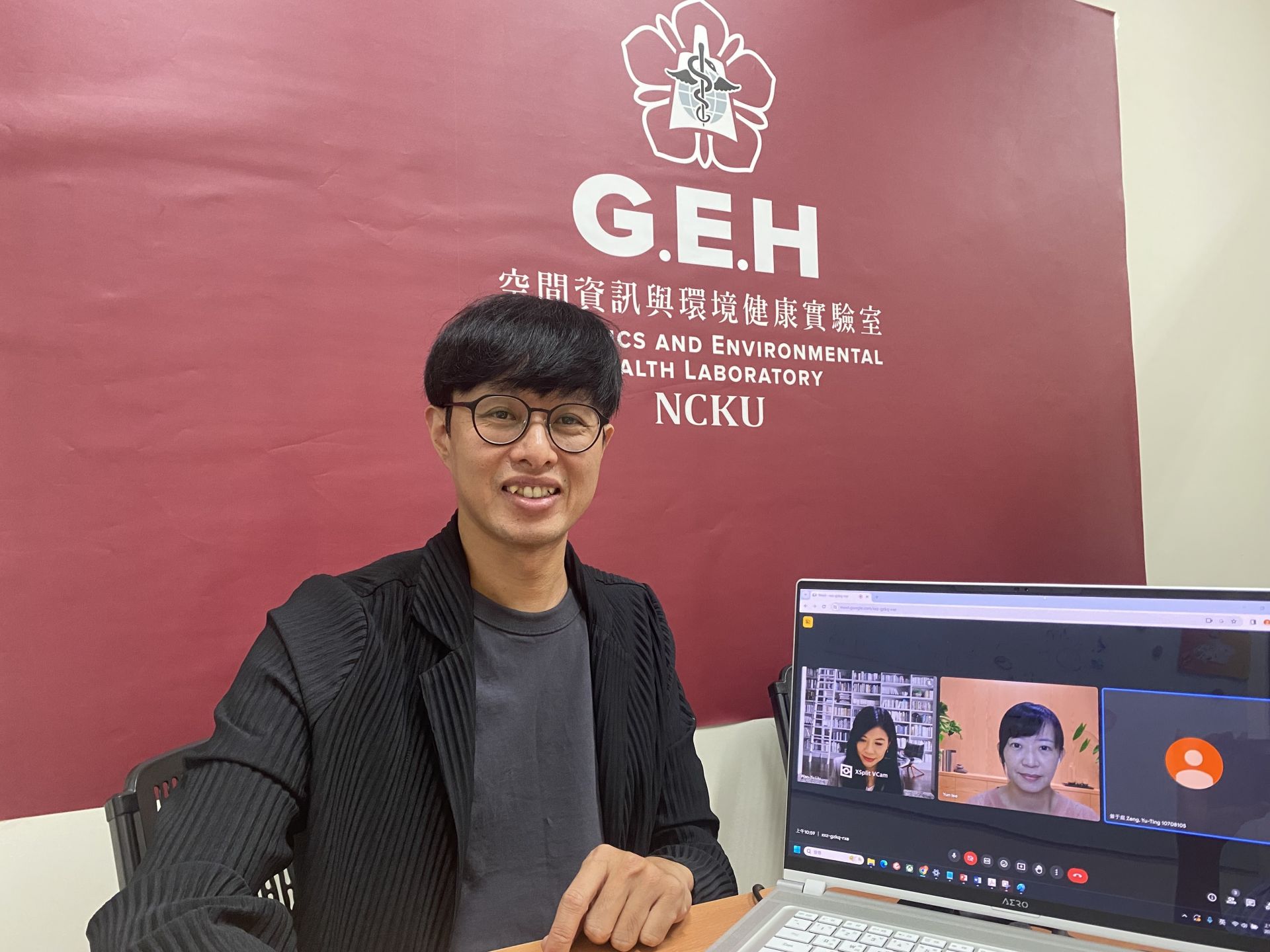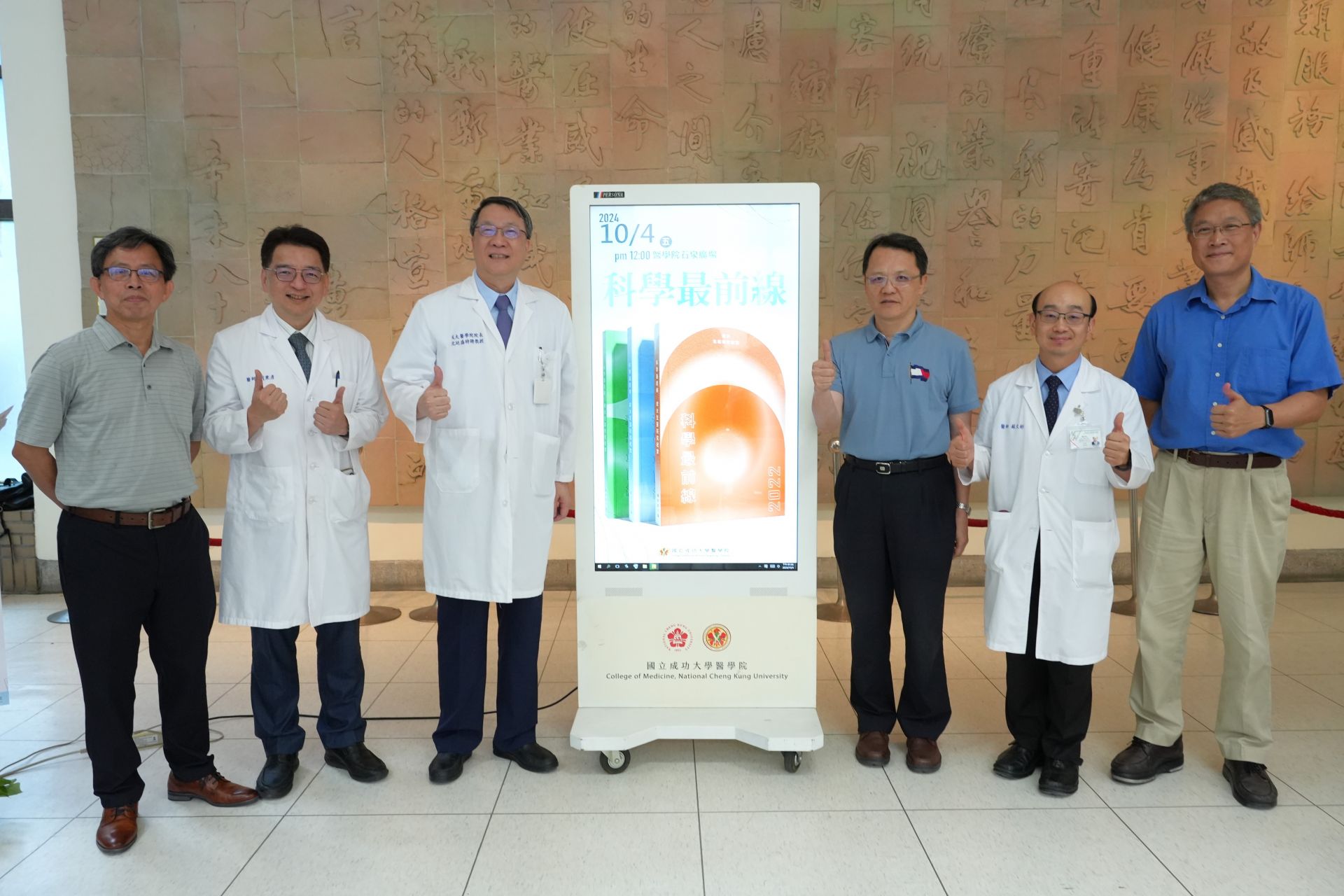Continuing the fight against neurodegenerative disorder Nan-Shan Chang and his students were invited to ASBMB again
The distribution of proteins in the brain has an important relationship with neurodegenerative diseases, according to Prof. Nan-Shan Chang, "We have found a common protein called TPC6A, and if there is a problem with this protein in the cell, it will run outside the cell and agglomerate in the cerebral cortex. This may happen in healthy people in their middle age, and after 30 years, Alzheimer's disease may appear; if this protein appears in a specific location in the midbrain, Parkinson's disease may appear later. If this protein appears in a specific location in the midbrain, later on, Parkinson's disease may appear. So if we can target this protein in mid-life, the solution is to treat the problem."
Professor Nan-Shan Chang said, "While purified hyaluronic acid for aesthetic medicine use cannot inhibit neurodegenerative diseases, our laboratory has developed a constitutionally altered hyaluronic acid that can inhibit tumors and slow down the symptoms of neurodegenerative diseases. If this special hyaluronic acid can be used as a beverage for patients to drink, it may be able to achieve good results, and the team's research is now proceeding in this direction. "
Tzu-Yu Sun, a master's student of Prof.Nan-Shan Chang's research team, was invited to deliver a lecture at the American Society for Biochemistry and Molecular Biology (ASBMB) annual meeting in 2022, and received international attention for her research on the ability of hyaluronic acid in special form to slow down the symptoms of neurodegenerative diseases such as Epileptic Seizure, Parkinson's Disease and Alzheimer's Disease. This year (2023), faculty and students were invited again to Seattle, USA, from March 25 to March 28 to share their research on glycogen and disease and neurodegenerative diseases.
In 2019, Nan-Shan Chang's research team was the first to discover that the tumor suppressor protein WWOX is closely related to neurodegenerative diseases, bringing new hope for the treatment of Alzheimer's disease. In August last year, Prof. Nan-Shan Chang retired from NCKU and joined theChina Medical University, Taiwan, continuing to dedicate his efforts to research. He said humorously, "An old man with gray hair working in the laboratory will look even better under the strong daylight lamps.
Continuing the foundation of previous research, Prof. Nan-Shan Chang's team members continue to work hard to promote the research results. Min-Xuan He(何旻璇), one of the remaining supervising students in the laboratory, is currently joining the laboratory of Yu-Min Kuo at the Department of Cell Biology and Anatomy, NCKU, and was invited to the ASBMB this year (2023) to share their work on the ability of two antiepileptic drugs, blebbistatin and CI-4AS-1, to improve the performance of WWOX and to protect against seizure-related injuries.
These two small molecules were isolated a few years ago by a master student, Chen-Yu Lu (盧貞伃), to induce cancer cell death. After graduation,Tzu-Yu Sun worked as an assistant of Prof. Nan-Shan Chang and observed in the laboratory of Kuei-Sen Hsu at the Department of Pharmacology, NCKU, continuing the research theme of 2022 which is to investigate the special structure of hyaluronic acid and Z-cells for the treatment of Parkinson's disease.
The 2023 ASBMB Annual Meeting will be attended by more than 3,000 people and will address topics such as Parkinson's disease, cancer, and drug addiction. The Association has more than 12,000 members in scientific and educational organizations around the world, and its members are all highly respected scientists. The Association publishes the Journal of Biological Chemistry and Molecular & Cellular Proteomics, which are leading journals in their respective fields. According to Prof. Nan-Shan Chang, a well-known scientist said during the meeting, "The first articles of Nobel Prize winners in medicine or chemistry are usually published in the Journal of Biological Chemistry, the simple reason is that the Association's journals have always been truth-oriented, rather than playing with commercial scientific points, like stocks to speculate."
Prof. Nan-Shan Chang expressed his gratitude for the help of these two teachers, which enabled the two students to complete their experiments as scheduled. It is not easy to be invited to deliver lectures at the annual meeting of ASBMB. This year (2023), the lab was invited to share three topics, including four lectures on neurological topics, two of which were given by our team. The drug discovery and development requires huge capital and time, at least 10 years and possibly $3 billion, and we look forward to collaborating with major international pharmaceutical companies in the future so that the research can enter the direction of treatment.
More information:
Chun-I Sze
https://www.scopus.com/authid/detail.uri?authorId=7003399546&origin=recordPage
Nan-Shan Chang
https://www.scopus.com/authid/detail.uri?authorId=56684142200&origin=recordPage
WWOX Controls Cell Survival, Immune Response and Disease Progression by pY33 to pS14 Transition to Alternate Signaling Partners.
Tsung-Yun Liu, Ganesan Nagarajan, Ming-Fu Chiang, Shenq-Shyang Huang, Tzu-Chia Lin, Yu-An Chen, Chun-I Sze, and Nan-Shan Chang. Cells. 2022 Jul; 11(14): 2137.

Professor Nan-Shan Chang presented "TPC6A Protein" at the ASBMB annual meeting in late March 2023, suggesting that if humans solve the protein problem in middle age by drinking special hyaluronic acid, they will be able to fight Alzheimer's disease and Parkinson's disease earlier.

Professor Nan-Shan Chang (center) has a long history of neuropathy-related research, and his research team was the first to discover in 2019 that the tumor suppressor protein WWOX is closely related to neurodegenerative diseases.

Continuing the foundation of previous research, Prof. Nan-Shan Chang's team members continue to work hard to promote the research results. After 2022, the laboratory has been invited to deliver lectures at the ASBMB in 2023.






















